drawing basic shapes in 3d
Cartoon 3-D Shapes: 5 Tutorials and Skillful Tips & Tricks
If y'all want to larn to describe realistically, 3-D shapes are a foundation for doing and so. Once you know how to imply multi-dimensional class, you can apply your cognition to all types of subjects.
Learn how to describe 3-D shapes and make your art pop off the folio.

You don't need any special tools to learn this skill. I'm using a pencil and paper, but feel free to use pens, colored pencils, crayons — whatsoever strikes your fancy.
Here are drawing tutorials for v mutual 3-D shapes with some helpful tips and tricks for cartoon them. Each is broken downward into simple steps that helps build the overall form.
1. How to draw 3-D triangles
There are two types of multi-dimensional triangles: prisms (left) and pyramids (right).

Step 1:
When drawing a prism, start with a elementary, flat triangle and small horizon point that's at the side of the shape. Information technology doesn't matter which side you chose. Where you place the horizon betoken determines the length and bending of your prism.
To create a pyramid, depict iii lines, as shown on the right above. In the middle should be a straight line. From the height of the straight line, depict two angled lines that are the same length. It's OK if the angles aren't exactly identical.
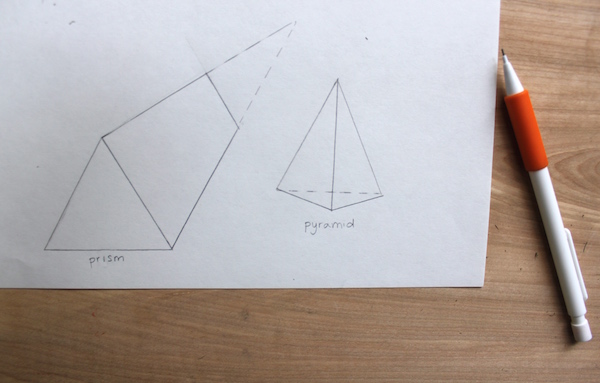
Stride 2:
Give your prism a 3-D appearance past drawing two lines: one off the top corner and one off the base corner of the triangle that's closer to the horizon point. Draw the lines lightly all the fashion to the horizon point. So, close it off with a unmarried line that's the same bending every bit the nearest side of the triangle. Erase the lines extending to the horizon point.
For the pyramid, you'll finish the drawing past connecting the three lines at the bottom. Draw a dotted horizontal line to connect the ii angled lines, and use angled lines to connect each angled line to the heart line.
two. How to draw cubes
Cubes can be fatigued in multiple ways, and hither, I've created two.
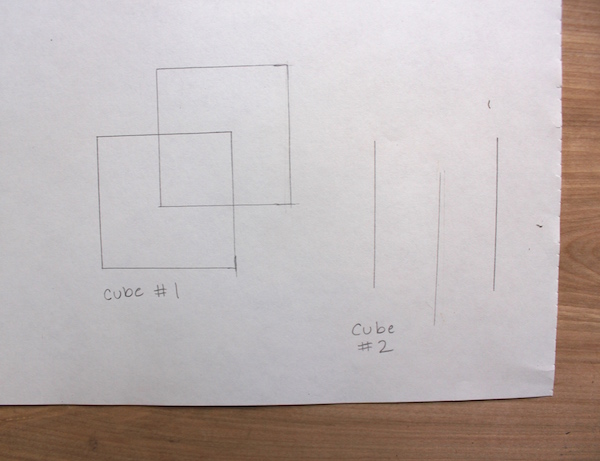
Step i:
To start the first cube, draw 2 squares that are the aforementioned size. They demand to overlap, but how much is up to you.
Draw the second cube much similar you did the pyramid. This fourth dimension, you'll brand three parallel vertical lines of the same size. The ii outer lines should start and end at the same point, and the center 1 should exist shifted downwardly a flake on the page.

Step 2:
At present information technology'due south all most connecting corners. On the commencement cube, apply a direct edge to draw angled lines to match the corresponding edges. And so you'll connect the bottom right corner of the first square to the bottom correct corner of the second square. Repeat this will all four corner.
For the second cube, connect the top points of the three lines with angled lines; repeat with the bottom points. Describe a bespeak directly above the center line — the distance between the meridian of the centre line and the point should be about the length of the center line. Connect the tops of the outer two lines to the bespeak with angled lines.
3. How to describe a cylinder
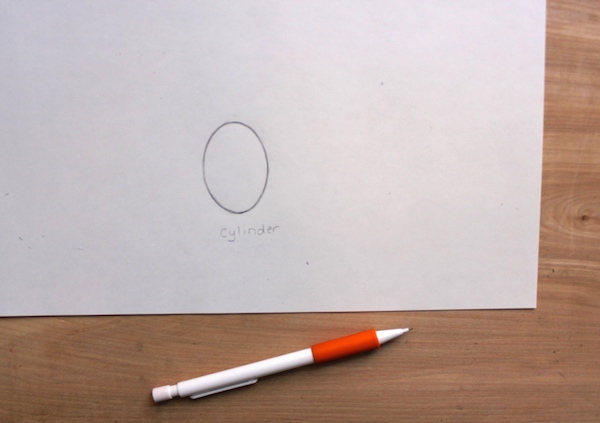
Stride i:
Start with an oval. Don't worry if you lot tin can't describe one perfectly correct away — I had to redo mine many times! You could trace something, likewise.
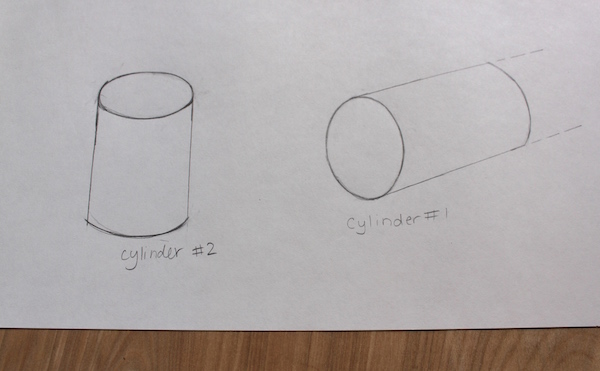
Step 2:
Afterwards yous have the oval down, describe two straight, perpendicular lines that come from either end. These lines tin can exist as long as you lot want and tin become in any direction.
Step 3:
Connect the direct lines with a curved line that mimics the roundness of the oval.
Tip: To make sure the bottom and top of your cylinder match, try turning the paper upside downwardly. It'll change your point of view and any inconsistencies will stand out.
4. How to describe a sphere
There are several ways to depict a sphere, ranging from elementary to very circuitous. No matter how much you want to claiming yourself, a cartoon of a sphere will get-go with a simple circle. Draw one freehand or trace a stencil or household detail.
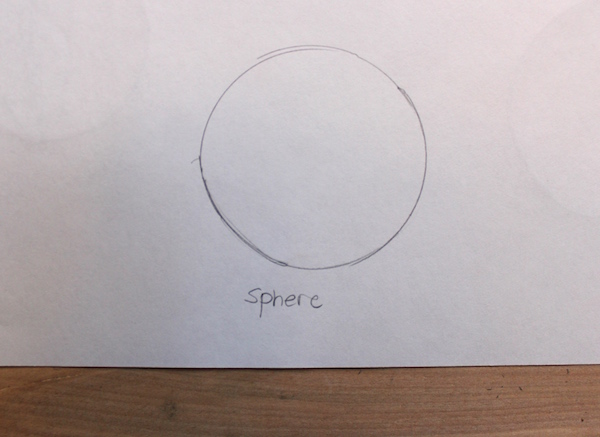
Easier:
There sphere looks all-time when it has shading, merely you tin can too brand it appear 3-D by drawing contour lines from top to bottom. Make sure the curve mimic the curves of the circle, with less exaggeration as you become closer to the middle.

More avant-garde:
While cartoon a realistic sphere is worthy of its own tutorial (this one has great pace-by-step photos), I practise want to give you one quick and easy mode to draw a sphere. This method looks more lifelike than the example above, but information technology's also much faster than drawing a very detailed sphere.
If you lot want to try simple shading, try a slope from calorie-free to night across the sphere. In this instance, the light is coming from the left, so the lightest point is on the left of the sphere and the darkest is on the right. Run into how information technology looks more than spherical?
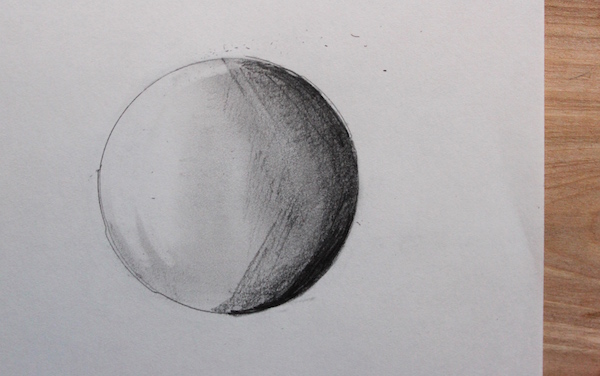
5. How to draw a cone
A cone is a cross betwixt a cylinder and a pyramid. And then we'll take what we know from both to draw this 3-D shape.
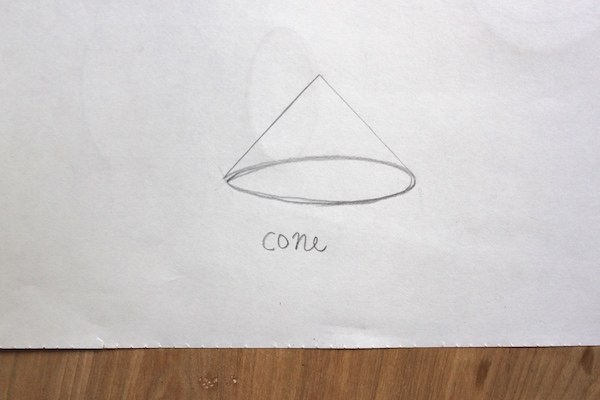
Step i:
Start with a horizontal oval. It doesn't have to exist perfect.
Step 2:
To finish, draw the ii sides of a triangle. The line for each side should outset at either edge of the oval and see in the middle above the center of the oval.
Tips for drawing 3-D shapes
- When trying to draw something three-D, straight lines are important. Use a straight edge (similar a ruler) when you lot can. Even if you lot don't take a ruler, something that's flat and made out of a sturdy material will exercise.
- Exist aware of the angles of lines. Things similar a cube, for example, require parallel lines to give them their shape. Others, like a cone, tin accept a variety of angles. Compare angles by holding your pencil up to the lines. If they match, and then your lines are probably parallel. If you want to get really technical, you tin can use a protractor.
- Pencils and erasers are your friend. Whenever possible, draw with pencil to get the angles and lines correct.
Drawing other 3-D shapes
Many objects you lot draw will autumn into one of those five major shape categories. If not, call back to check your angles and make straight lines. I take this ceramic polygon shape that doesn't really fit as a cube, cone or a prism. Here's how I made it come to life.
Stride 1:
By starting with a straight edge, I was able to make the outline of the shape.
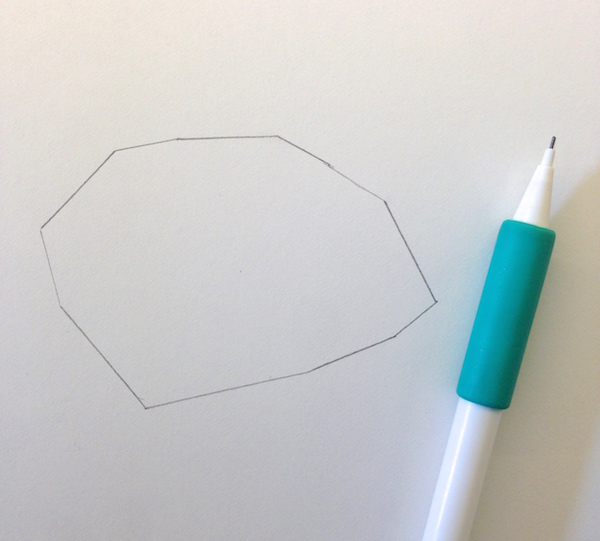
Step ii:
I and then drew the inside of the shape to convey its multi-dimensional feel. Comparing angles — from the object itself — helped me when cartoon. I still had to go back and set up some lines, though.
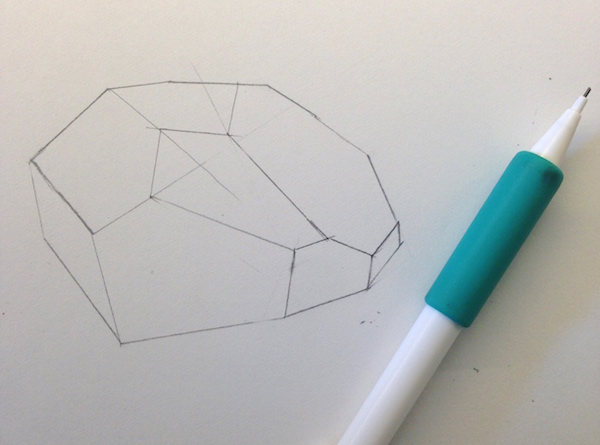
Step iii:
To requite the shape fifty-fifty more presence, I shaded parts of it based on the bending of light. This conveys the dissimilar surface planes and sense of form. Shading is a circuitous subject that we don't have time to cover in this post, only you can learn more about it in the Craftsy class 10 Essential Techniques for Better Cartoon.

Source: https://www.craftsy.com/post/how-to-draw-3d-shapes/
0 Response to "drawing basic shapes in 3d"
Post a Comment